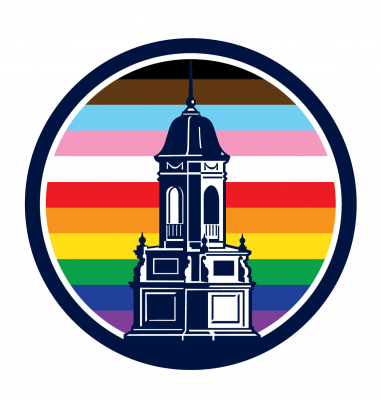-What is your academic background and what is your current position in UCHI/at UConn/Your Home Institution?
I have a BA from the University of California Berkeley in Comparative and Slavic Literatures (double major). After I received my degree, I spent two years living in Tbilisi, Georgia, during when I embarked on the research that went into my first book Writers and Rebels: The Literature of Insurgency in the Caucasus (Yale University Press, 2016), which examines anticolonial poetry and prose during the tsarist and Soviet periods. My PhD dissertation (Columbia University, 2013) deals a literary genre from a much earlier period: the medieval Persian prison poem. I am very lucky to have recently joined the University of Birmingham, where, as a Professor of Islamic World and Comparative Literature, I am able to bring together my wide-ranging interests in the Islamic Studies and Comparative Literature, from the medieval period to the postcolonial present.
-What is the project you’re currently working on?
My current book project is tentatively entitled Narrating Catastrophe: Forced Migration from Colonialism to Postcoloniality. This work tells of an aspect of the colonial encounter in the Caucasus that Writers and Rebels ignores. Both this and my first book were inspired by the experience of living in Tbilisi, Georgia, from 2004-6, among Georgian intellectuals and Chechen refugees. When I engaged with the history of the peoples I was living with and learning from, I began to notice two ways in which the past was remembered. The first way, of glorifying and sanctifying anticolonial violence, became the focus of Writers and Rebels. The second approach to the past that I noticed involved memorializing narratives of forced migration from the Caucasus to Ottoman lands (during the tsarist period) and Central Asia (during the Soviet period), such that forced migration became a recurring trope within popular culture. This repeated story of forced migration that dominates the literatures of the Caucasus is the subject of Narrating Catastrophe. The term for this story, hijra, refers to the migration of the prophet Muhammad from Mecca to Medina as well as to subsequent migrations, both forced and voluntary, within Islamic history.
-How did you arrive at this topic?
In Narrating Catastrophe, I explore the many meanings of forced migrations across the Islamic world, with a particular focus on the Caucasus. The more immersed I became in Caucasus narratives of displacement, the more clearly I saw that these narratives intersect with other narratives from elsewhere in the Islamic world, including the nakba (catastrophe) among Palestinians and the expulsion of Spanish Muslims during the Reconquista, which is also referred to as hijra. Although these events are obviously distinct, they are united by their narrative connection to early Islam. Needless to say, the connection I refer to is more narratival than historical, but as a scholar of Comparative Literature, it is precisely the imaginative links that extend across continents and which have persisted across centuries that I find fascinating.
-What impact might your work have on a larger public understanding of your topic?
To start with the most obvious: as a scholar of the Islamic world, I believe that the world I work on has a special contribution to make to policy debates. By viewing Islamic history through the prism of hijra—rather than through more violent idioms, such as that of jihad—I offer readers a means to engage with core Islamic narratives outside the polarizations that circulate in the media accounts that are the primary source for popular understanding of Islam. Another area in which this project stands to make an impact is on how we understand migration. Generally, migration is viewed from the perspective of the interests and norms of the host country. What would migration looked like if viewed from the perspective of the migrant? Narrating Catastrophe offers one answer to this question. Like Thomas Nail, whose recent book The Figure of the Migrant (Stanford, 2015), reveals how the migrant condition applies to all of us, my use of the hijra narrative showcases the general relevance of this concept and its attendant histories across the Islamic world. Rather than offer an historical account, I am developing a political theory around Islamic migration, based primarily on literary narratives from the Caucasus. The final area of impact is to do with the Caucasus itself. To my mind, the Caucasus is one of the most understudied, yet most fascinating regions of the world. It combines Muslim, Christian, and other religions traditions in close proximity to each other and is unsurpassed in terms of its linguistic and cultural diversity. Throughout my work, I have developed the idea of the Caucasus as a marginalised crossroads, meaning a geography that nearly always finds itself on edges of power and yet which maintains a kind of centrality to European and Islamic culture. By immersing my readers in an intertextual tradition that they surely will not have encountered before, I hope to enable them to think differently about migration and mobility, and from perspectives they have not contemplated before.


